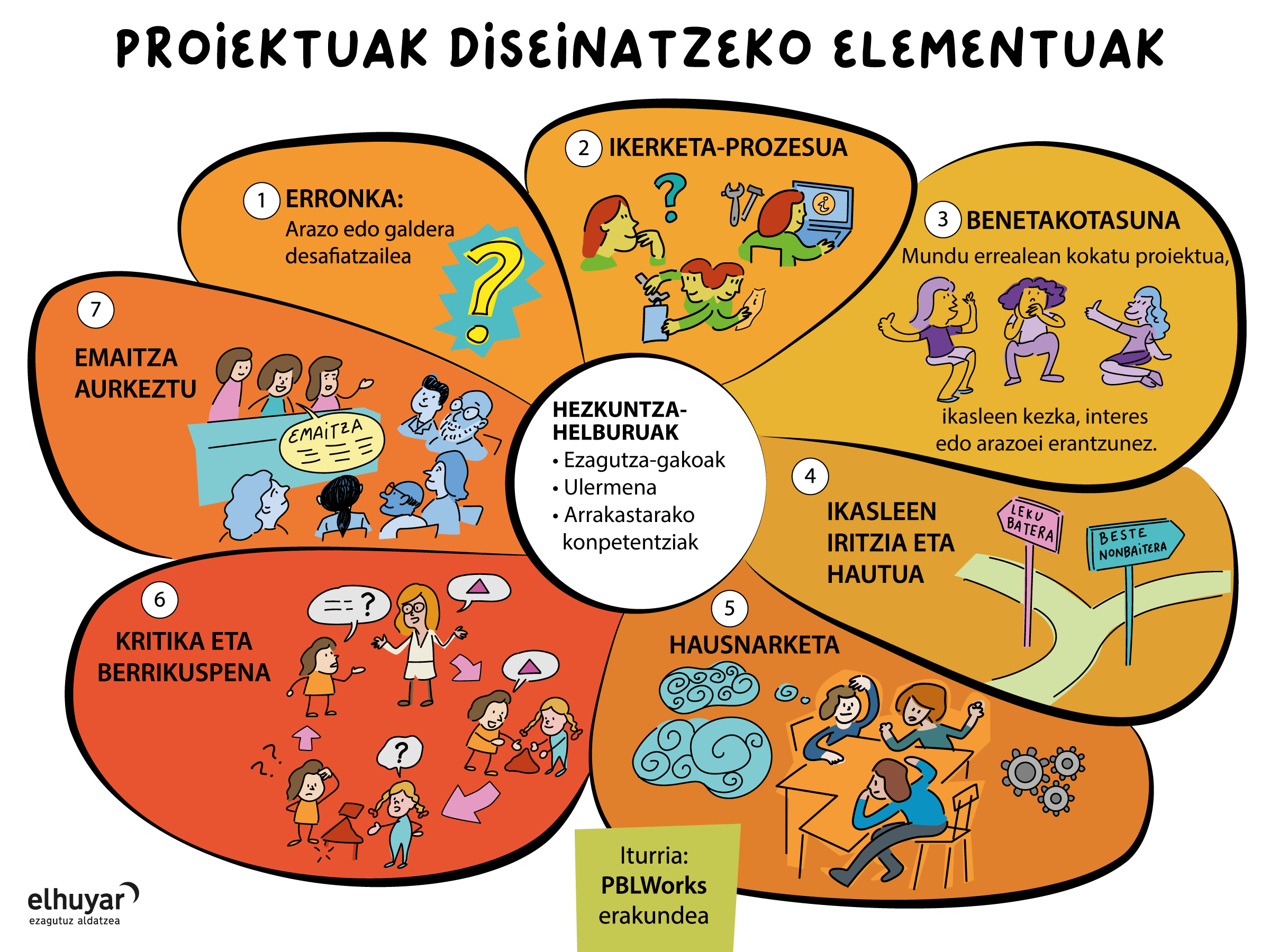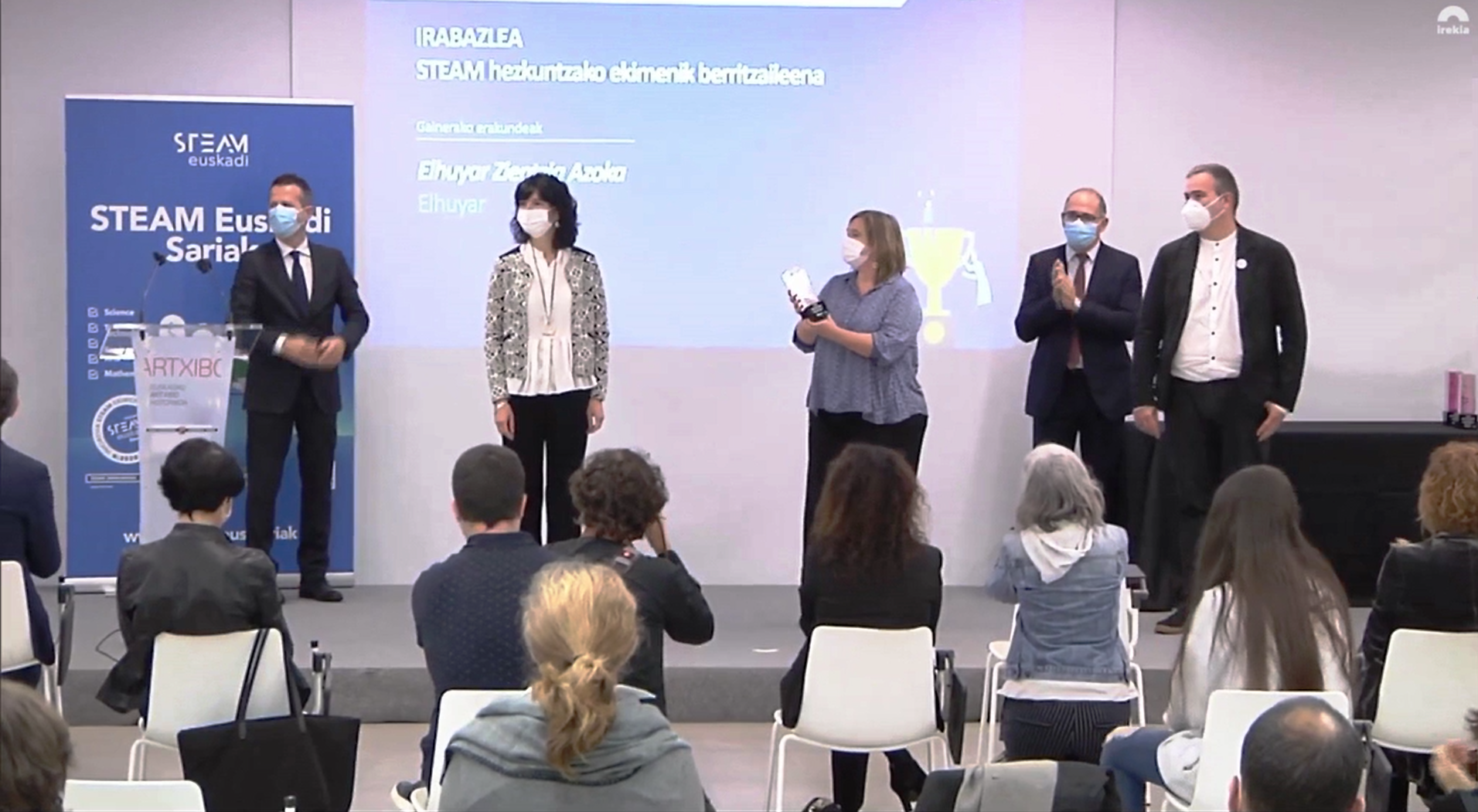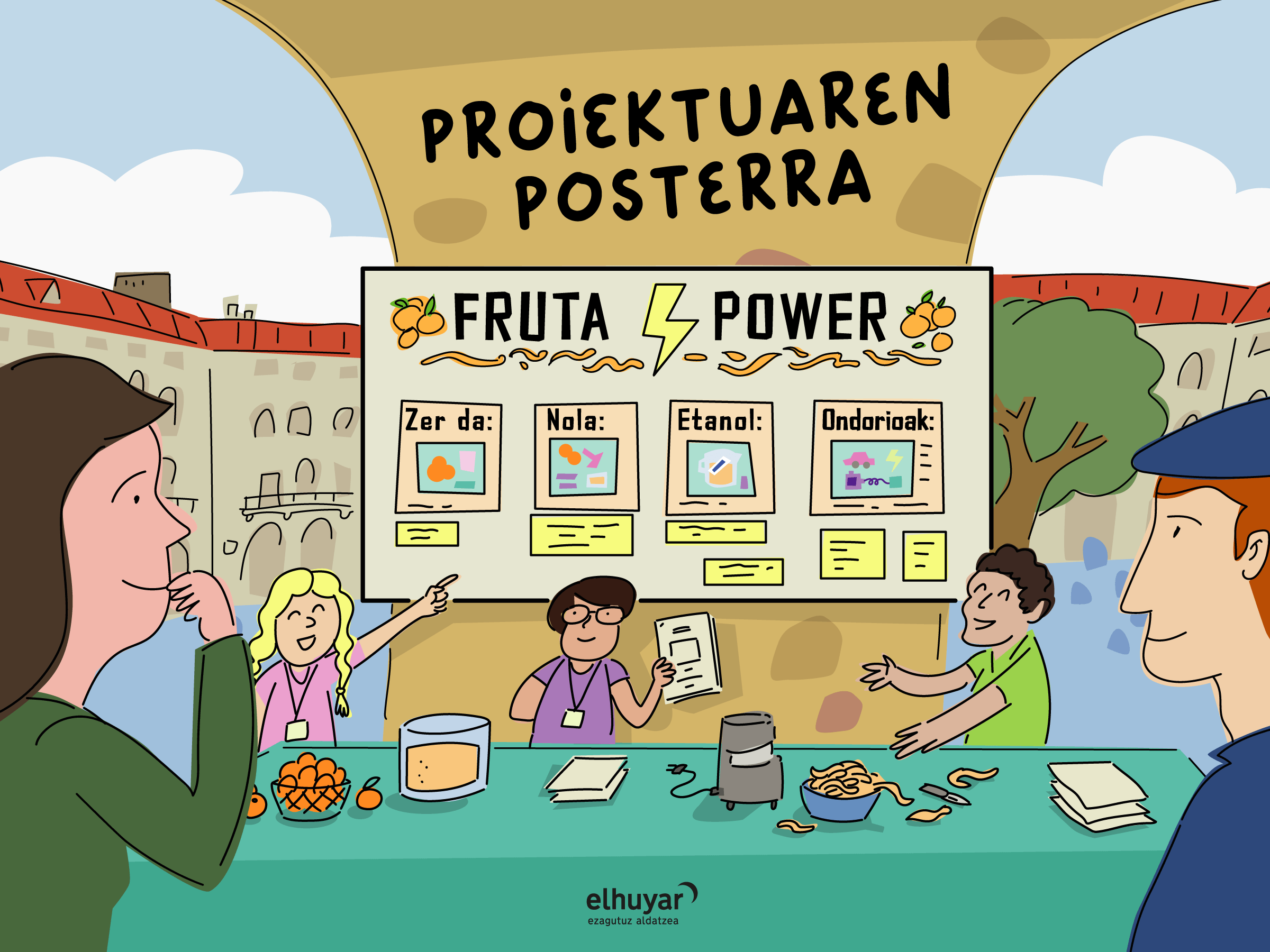Learning by doing projects
2021/05/26 STEAM-Hezkuntza (Elhuyar Zientzia)

In Primary Education it is customary to work on interdisciplinary projects on a topic. Students enjoy Roman times, dinosaurs, water, etc. In addition, Vocational Training has a long tradition in projects, addressing theoretical and practical aspects related to a challenge.
But why does it cost us so much to overcome interdisciplinary limits in Secondary School? The reasons are many, but more and more professionals are asking for and processing change, and for this (also) working on projects can be an adequate and rich way. It is true that there is no single methodology based on projects, which hinders the definition of a “universal” or standardized process, although this diversity allows the teacher flexibility in the educational process: being with experts, going to scientific fairs, seeking family participation, taking advantage of available resources, etc.
Project work has long come. Going back in history, in Rome we find the Accademia di San Luca, founded in 1577. In it, in addition to giving theoretical explanations to the artists, they were urged to apply them in a work and to defend them before a jury. These are not completely finished works, but the first sketches: the progettis. Since then and until today, teaching methodologies that have given the importance of challenges, applications and communications of results have been used in different areas and in recent years are being implemented in our centers as a pedagogical model for the development of the scientific and technological competences of Secondary Education.
Education for the social inclusion of young people
As already mentioned, under the umbrella of the name “project-based learning” various ways of teaching are grouped, but all of them have common characteristics:
• Students learn by actively working on a topic that interests them and is directly related to the real world.
• In this project students try to solve a problem or answer a complex question in the real world and work on a medium or long term project, which can extend from one week to the whole course.
• Demonstrates the knowledge and skills each has, creating a product and presenting it to the public.
As a result of this learning, students work on critical thinking, collaborative skills, creativity and communication skills, as well as in-depth learning of content.
Seven basic elements for project design
When designing the work of teachers in projects, 7 ideas should be taken into account:
1.- The challenge: a problem or a question that poses a challenge
The project is based on an important problem to solve or a question to answer with an adequate degree of difficulty.
2.- Research process
Students undertake to raise questions, locate resources and apply information in a rigorous and comprehensive process.
3.- Authenticity
The project is located in the real world. The project responds to concerns, interests or personal problems of student life.
4.- Opinion and choice of students
Students make decisions about the project, including how they will work and what they will create.
5.- Reflection
Students and teachers reflect on their learning, on the effectiveness of their research activities and projects, on the quality of their work, on the barriers that arise and on strategies to overcome them.
6.- Criticism and review
Students give feedback, receive and apply to improve their processes and products.
7.- Presentation of the result
Students present their project to a specific audience outside the classroom.
Classification of Secondary Education Projects
The classification of the types of projects carried out by students in Secondary Education is not easy. Focusing on the simplest, we can divide scientific research, technological projects and combined.
If we try to group ourselves in more detail, we will encounter different options and difficulties. To respond to this, numerous classifications have been created, especially in the professional world of research, but these categories are not used to classify the projects that are carried out in Secondary Education (experimental, quasiexperimental, non-experimental, documentary, technological, exploratory, descriptive research…).
Instead of these classifications, the classification of Secondary Education projects is usually more common classification by subjects or areas, although there are also problems for the classification of mixed projects and the establishment of criteria. For example, at the scientific fair organized by the European Commission, the projects are divided into the following categories: biology, informatics, chemistry, earth sciences, engineering, environment, materials, mathematics, medicine, physics and social sciences.
Taking into account all the complexities that have been mentioned for the implementation of the criteria, and with the intention of offering something useful, we propose two main types, based on the most common methods used: research projects and technological projects.
The role of the teacher becomes especially important when students carry out projects. While it is true that students are placed in the place of researchers, we must bear in mind that our students continue to develop the skills of researchers: autonomy, experience, procedures, theoretical knowledge, knowledge in the use of resources… All this is a great challenge to manage it in a medium/long term project, more if it is a reduced experience of work in projects. Therefore, the teacher has to assume different roles to respond to the needs of the students: guide, give explanations, create learning situations, contrast, inspire, help in the organization…
Finally, it should be noted that working on projects is not usually liked by all students, but in general most students value it very well, especially as they gain experience year after year.

Gai honi buruzko eduki gehiago
Elhuyarrek garatutako teknologia






